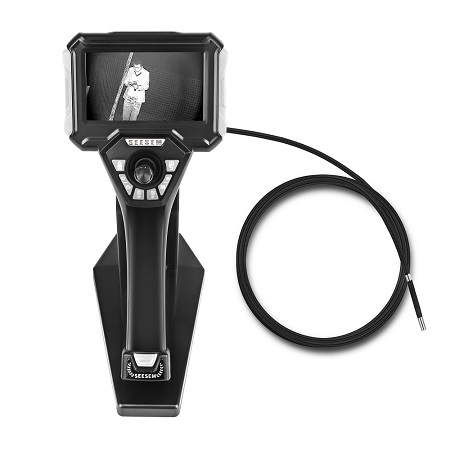산업용 비디오스코프s play a crucial role in various industries, enabling efficient inspection and maintenance of inaccessible or hard-to-reach areas. These sophisticated tools consist of several essential components that work together to provide high-quality visual inspection capabilities. 이 기사에서는, we will explore the key components of an industrial videoscope and their functions.
- Insertion Tube: The insertion tube is a flexible and durable cable that allows the videoscope to reach confined spaces. It is typically made of tungsten or stainless steel braided material to provide strength and flexibility. The insertion tube houses a bundle of optical fibers responsible for transmitting light to the target area and capturing images or videos.
- Light Source: Videoscopes employ an integrated light source to illuminate the inspection area. Light-emitting diodes (LEDs) are commonly used due to their energy efficiency and long lifespan. The light source is directed through the insertion tube’s fibers, allowing the operator to visualize the target area clearly.
- Imaging Sensor: An imaging sensor is a critical component that captures visual data from the inspection area. Most industrial videoscopes use complementary metal-oxide-semiconductor (CMOS) or charge-coupled device (CCD) sensors. These sensors convert light into electrical signals, forming images or videos that can be displayed on a monitor or recorded for later analysis.
- Articulation Mechanism: To navigate through complex structures or curved pathways, industrial videoscopes incorporate an articulation mechanism. This mechanism consists of a series of interconnected joints within the insertion tube. By manipulating controls on the videoscope’s handle, the operator can articulate the tip of the insertion tube, allowing for precise and controlled movement.
- Control Handle and Display: The control handle serves as the interface between the operator and the videoscope. It houses the control buttons or joysticks for adjusting the articulation, focus, and zoom functions. 추가적으로, the control handle is equipped with a display screen that provides real-time visualization of the inspection area.
- Video Processing Unit: The video processing unit is responsible for receiving, processing, and transmitting the captured video or image data. It enhances the quality of the images, adjusts brightness and contrast levels, and can incorporate features like image stabilization and noise reduction. Some videoscopes also offer wireless transmission capabilities, allowing the data to be sent to external devices for further analysis or documentation.
- 전원: Industrial videoscopes typically rely on rechargeable batteries or external power sources to operate. Battery-powered videoscopes offer enhanced portability and convenience for inspections in remote locations or areas without easy access to electrical outlets. The power source supplies energy to all the components of the videoscope, ensuring uninterrupted operation during inspections.
결론: Industrial videoscopes are complex devices composed of several essential components that work in harmony to enable visual inspections in challenging environments. The insertion tube, 광원, imaging sensor, articulation mechanism, control handle, display, video processing unit, and power source collectively contribute to the functionality and effectiveness of these indispensable tools. With ongoing technological advancements, industrial videoscopes continue to evolve, providing improved image quality, enhanced maneuverability, and expanded inspection capabilities in a wide range of industries.


